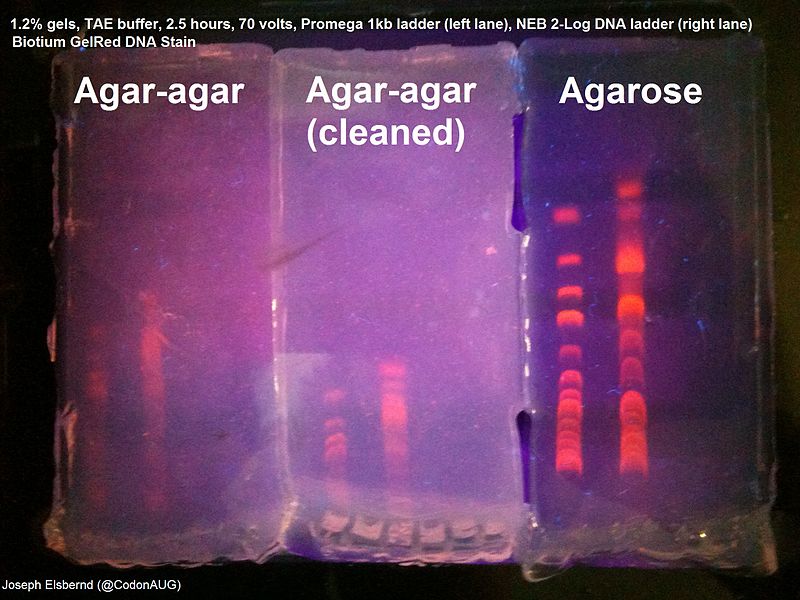Table of Contents (click to expand)
DNA only appears white when we isolate it. It appears white because of impurities, such as proteins. DNA itself does not have any color.
If you were a geeky kid, you might have tried to extract DNA at home, or if not, you can certainly give it a try now. The end result of this quirky experiment would be a white gooey microscopic lump. It seems like an anticlimactic description for the extraordinary genetic material essential for all life. One might expect all sorts of funky colors from this biological essence, but sadly, that’s just not the case. Let’s look into the science behind that.
What Is The Color Of DNA?
DNA is just a molecule. It’s made of a long chain of building blocks called nucleotides, which are themselves composed of smaller molecules, including sugars, phosphates, and nitrogenous bases. None of these compositional molecules are particularly colorful on their own, so it makes sense that a combination of them wouldn’t be colorful either.
Color is the result of which wavelengths of light an object absorbs and reflects back. Plants are green because they absorb red and blue wavelengths of light and reflect green and yellow back. DNA neither absorbs nor reflects visible light. This is why DNA is translucent to transparent within a cell or when dissolved in a solution.
DNA does absorb UV rays, but these unfortunately damage the DNA; absorbing UV rays causes the DNA to chemically break.

Also Read: What Is DNA And How Does It Work?
Why Does It Appear White?
However, when we precipitate and isolate DNA out of the cell, it appears white.
To precipitate DNA out of the water, it is mixed with alcohol. The alcohol molecules interact with the water molecules in the solution, causing the DNA to become insoluble and precipitate out of the solution. This is known as “salting out” and it is a common method used to isolate DNA.
When enough DNA is present in the solution, the precipitation forms a stringy white mass, which can even be visible to the naked eye. This is because the DNA strands become intertwined and form a physical structure that reflects light, making it appear a translucent or white color.
The reason why the DNA appears white when precipitated is its highly concentrated form. The density of the DNA in the precipitate is much higher than in a solution, which causes it to scatter light differently. This scattering of light results in the white appearance of the DNA. There may also be impurities present in the mass of DNA that further gives the white appearance.
Interestingly, the color of the alcohol being used can affect the appearance of the DNA precipitation. If isopropanol is used, the DNA will appear as a white, stringy mass. However, if ethanol is used, the DNA will appear as a white, cloudy mass.

Also Read: Can You Extract DNA From Cells At Home?
Is There Another Color In Which DNA Can Be Seen?
Absolutely, yes! With the help of DNA dyes, DNA can be seen in a variety of fluorescent colors. DNA dyes are colorful compounds that just love to hang out with DNA molecules. They make it easy for scientists to spot and study DNA in the lab by emitting fluorescent light. There are several types of DNA dyes, including old-school Ethidium Bromide (EtBr), which glows reddish-brown.
On the other hand, there is SYBR Green, which emits a cool green light and is far less toxic. GelRed is a newer dye that is similar to EB, but is a bit more well-behaved, glowing red under UV light. Hoechst dyes are like the shy kid who only hangs out in the minor groove of DNA, and glows blue under UV light.
Basically, the choice of dye depends on what the scientists are studying and what they wish to observe with the coloration. Some dyes may be more sensitive or specific to certain types of DNA, while others may be easier or safer to use. One thing is for sure: without these colorful characters, it would be much harder to study the fascinating world of DNA.

Also Read: What Is Gel Electrophoresis? How And Why Is It Useful?
Conclusion
The ability to visualize and analyze DNA molecules has revolutionized the fields of genetics and molecular biology. It has led to incredible breakthroughs in medicine and biotechnology. By using dyes and precipitation methods to visualize DNA, scientists have been able to study the structure and function of DNA molecules—our building blocks of life. It has led to the development of new technologies, such as DNA sequencing, gene editing, and genetic engineering. The beauty and complexity of DNA are truly remarkable, and our newfound ability to see and study it has expanded our understanding of life itself.
Also Read: Does Human DNA Change With Time?
How well do you understand the article above!

